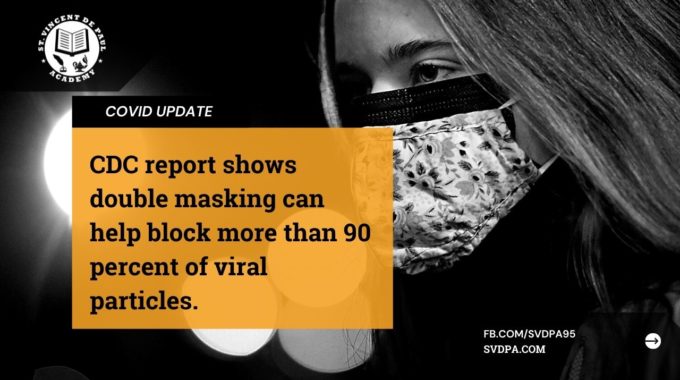https://youtu.be/lztEnBFN5zU?si=Unpz8b7p0SeR_ezj An interesting video published by VOX discusses the concept of adventure playgrounds, which offer…
CDC report shows double masking can help block more than 90 percent of viral particles
Why double mask?
On top of the CDC’s new findings and subsequent guidance regarding double masks, interest in the practice had been steadily growing for some time. Jess Steier, DrPH, co-founder and CEO of healthcare data analytics company Vital Statistics Consulting, told us questions about double masking had been circulating lately given news about Covid-19 variants popping up across the world, including in the U.S. Andrea Love, PhD, a regional manager for Nexcelom Bioscience, added another potentially motivating factor for the interest: Although there is early evidence to suggest that the Covid-19 variants are more transmissible, it’s still unclear how they will affect how the virus behaves. Love co-hosts the topical Unbiased Science Podcast with Steier.
While scientists and doctors don’t have exact answers yet, more highly transmissible variants may mean contracting the virus after shorter periods of exposure, for one thing. Thus, Love said the mitigation measures we take need to be more stringent, especially in regards to wearing face masks since they act as a “physical barrier to block these respiratory droplets.”
“Masks are not 100-percent effective, so you’re going to stop some droplets but not others,” explained Love. “If we’re trying to increase the number of droplets we block because the virus variants are more transmissible, that means we need better mask materials and more layers.”
More specifically, the CDC correlated different types of masks with efficiencies in blocking particles small enough to be considered “most important for transmitting SARS-CoV-2.”
- 42 percent of particles blocked: Unknotted surgical mask
- 44.3-percent of particles blocked: Cloth face mask
- 92.5-percent of particles blocked: Double mask
How to double mask
Double masking involves wearing two masks, one on top of the other. Some people opt for a medical-grade mask like an FDA-certified N95, KN95 or KF94 and layer a reusable cloth face mask on top of it. If you do use a disposable face, make sure to knot and tuck the mask for a tighter fit. By eliminating the gap where germs and other contaminants can slip in, a simple knot-and-tuck can reduce a person’s exposure to particles by 64.5 percent, the CDC reported. An easy way to see if the mask fits improperly is if cold breath comes out from the sides of the mask or if your glasses fog up.
If you don’t have access to a medical-grade mask, Love said you can also double up reusable cloth masks — the CDC recommends choosing fabric with two or more layers of tightly woven cotton, which is both machine-washable and breathable. “Overall, more layers is going to be better regardless,” Love noted, “because you’re providing a better physical barrier for these droplets.”
Should you double mask?
Overall, Love highlighted that “double masking is a very quick way” to ensure you have additional protection against the coronavirus.
“Transmissibility is of growing concern with the variants, so we absolutely suggest that folks double mask and insert a HEPA filter into reusable cloth masks for further protection,” Love noted. “It’s especially important if you’re indoors, in crowded spaces or in a place where mask adherence is low.”





